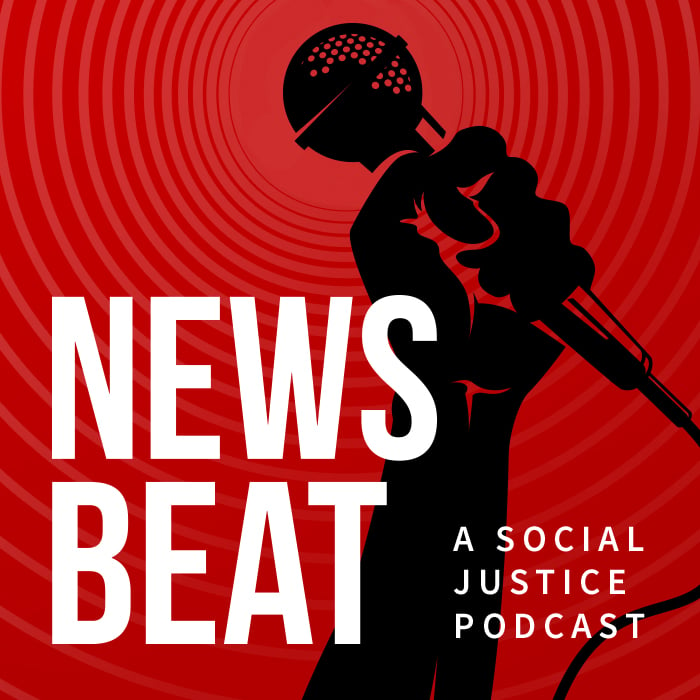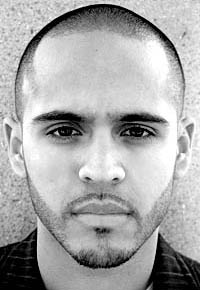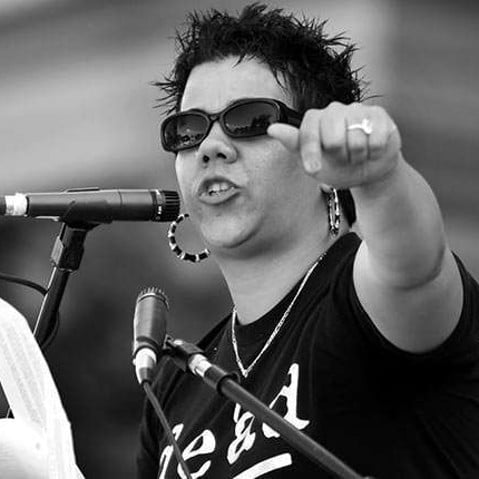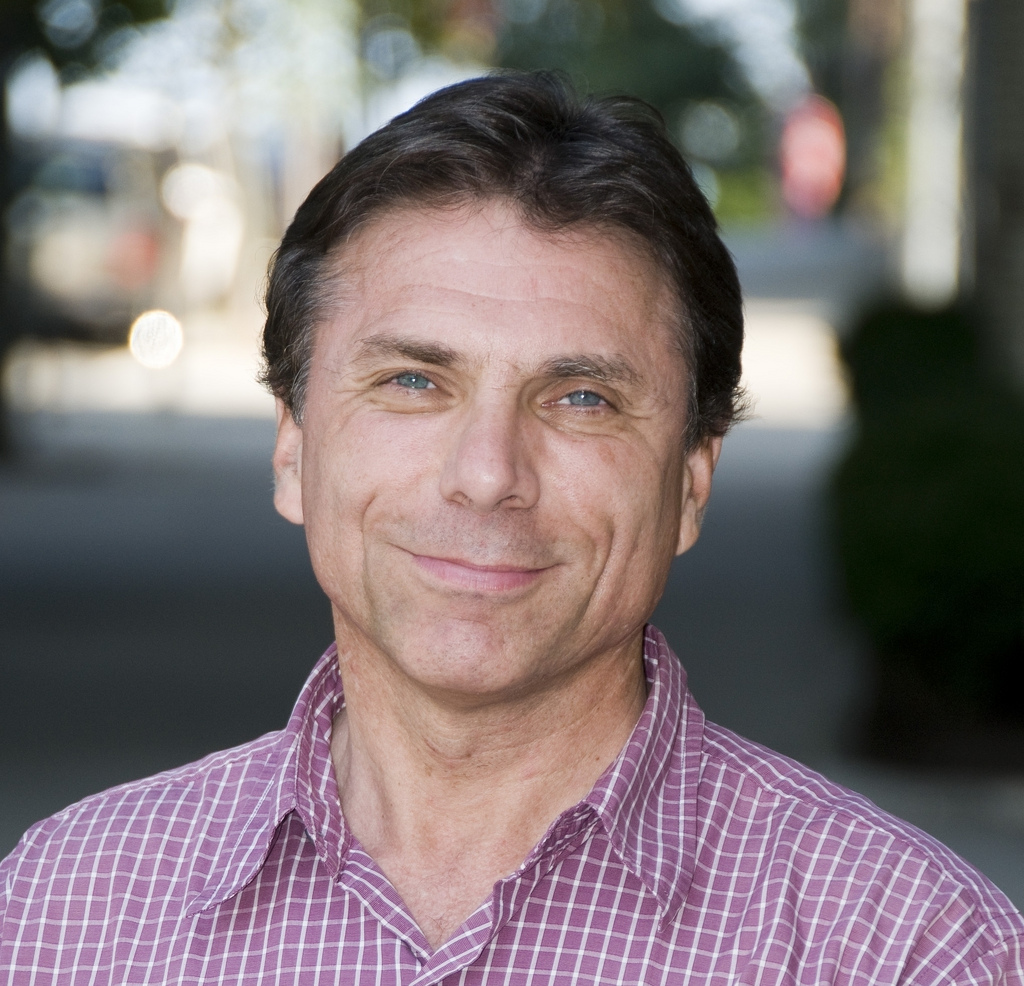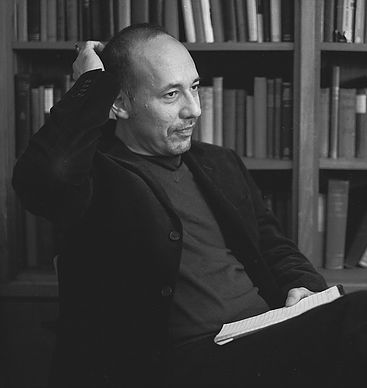The veteran New York-based journalist, author and filmmaker hadn’t heard from her in about 10 days following the apocalyptic hell unleashed on Puerto Rico by Hurricane Maria, and like countless other family members cut off from their loved ones on the Caribbean island and unincorporated U.S. territory, he imagined the worst.
Eighty nine years old and coincidentally sharing the storm’s name, Maria lived in Rio Grande, a remote coastal town near the lush El Yunque National Forest carpeting the slopes of the Sierra de Luquillo. She didn’t drive, and also suffered health issues.
Perhaps a terrible flood had swept through, engulfing her home—as was the fate of hundreds of thousands of residences, with ultimately nearly 90,000 completely destroyed. Even after one of her neighbors caught a rare cell signal to relay she was alright, Morales still wasn’t so sure.
So he and his sister and brother-in-law embarked for the ravaged unincorporated U.S. territory to bring Maria to the mainland and ensure her safety.
The heartbreaking devastation he witnessed–the annihilated landscape, washed-out roads and communities, the unquantifiable anguish of those who lost everything—was merely the beginning of a still-ongoing recovery with no clear end in sight, and a completely alternate reality to the “fantastic job” portrayed repeatedly by President Donald Trump, both in the immediate aftermath of the decimating, high-end Category 4 storm, and perpetuated through tweets and public comments to this day.
“It looked like a forest fire went through it and just destroyed everything,” recounts Morales, in a classroom at Columbia University’s Center for the Study of Ethnicity and Race, where he’s an adjunct professor and lecturer. “And then, the other dramatic thing was the electrical/telephone—electrical poles—being knocked over, and just a lot of exposed electrical wires everywhere, on roads everywhere.
“The lack of communication,” he continues, reiterating an underreported aspect of the catastrophe that’s had horrific consequences since Hurricane Maria’s Sept. 20, 2017 landfall on Puerto Rico. “It took a strong psychological toll that I think still is being felt.”
More than 3 million American citizens—repeat that: American citizens—went without electricity, clean drinking water, communications, and adequate shelter, for nearly a year following its assault, with many communities still in need, and perhaps never fully recovering. Compare that with the U.S. government’s response to any other natural disaster to hit the mainland.
You can’t. Not even in the same universe.
The sad, brutal truth is the U.S. government has a long, shameful history of unimaginable abuses against Puerto Ricans, beginning with its invasion and bombing of the island in 1898. Since then, it’s been a legacy of physical, psychological, and economic warfare, torture, and subjugation that resonates on through today—its current humanitarian and pre-existing $123 billion financial crises simply par for the sinister course of U.S. imperialism and colonialism.
The disgraceful U.S. government response to Hurricane Maria, and sick, twisted revisionist history of President Trump denying the horrific deaths of thousands of people in its wake, are merely the latest glimpses into just how little Uncle Sam has regarded, and how poorly it has treated, Puerto Rico and its inhabitants, for the past 120 years.
Central to understanding all this is recognizing that Puerto Rico is a U.S. colony, and subject to all the horrors imperialistic colonialism entails.
The United States invaded Puerto Rico in 1898, and as colonists, Puerto Ricans—since 1917, “U.S. citizens”—have endured atrocities ranging from assassinations and bombings to covert mass sterilizations and incarcerations, and the island for decades has been used as a testing ground for experimental weapons and pharmaceuticals, while also serving as a triple-tax-free paradise for U.S. corporations, hedge funds and Wall Street, who’ve enslaved an entire people, all but seized their nation out from beneath them, and are fighting tooth and nail for more.
Puerto Ricans can’t vote for U.S. president, can’t import/export goods unless via U.S. ships, and don’t control their own destiny, the U.S. Congress does. Historically, any attempts at independence have been crushed by force, and its proponents massacred.
Yes, U.S. colonialism decimated Puerto Rico long before Hurricane Maria, and its legacy of physical, psychological and socioeconomic destruction resonates on through today.
‘WAR AGAINST ALL PUERTO RICANS’
Hurricane Maria isn’t the first storm of biblical proportions to all-but destroy Puerto Rico, nor, has the United States’ controversial response to it been its worst.
The island fell within the crosshairs of the mammoth San Ciriaco hurricane—infamously the longest-lived Atlantic hurricane on record—in 1899, a year after it’d been bombarded, invaded, and taken by the United States from Spain as a prize of the Spanish-American War.
More than 3,300 Puerto Ricans were killed in its flooding and 100-plus mile-per-hour winds. More than 250,000 went homeless. Just as with Maria, the island was plunged into darkness, as electricity and communications were cut. An agricultural society at that time, its coffee crops were leveled.
A Spanish colony for more than 400 years prior to the American siege, instead of mobilizing an equally historical humanitarian effort to save lives or provide massive amounts of aid, its new master seized the opportunity to launch a different kind of initiative—one of the many brutal tactics of colonial oppression outlined in excruciating detail by author and former New York State Assemblyman Nelson Denis in his book War Against All Puerto Ricans: Revolution and Terror in America’s Colony.
“The United States sent no meaningful hurricane relief in ’99,” he tells News Beat at his apartment in Washington Heights, months before Hurricane Maria was even a tropical storm swirling off the coast of Africa. “Instead, the following year, in the year ‘90, what it did, is it mandated, through Congress, through their plenary jurisdiction, that Puerto Rico’s currency could no longer exist, and that each—which is based on the Spanish peso—had to be turned in, and it was worth only 60 American cents.
“Now internationally, the Spanish peso and the Dollar were roughly equal buying power, roughly,” he continues. “So, to declare that you need to turn in your pesos, and they’re worth 60 cents—that is devaluing, that is expropriating 40 percent of the wealth of every Puerto Rican on the island.
“Think of what would happen if we all woke up here, all of us, and you had 40 percent less in the bank, your loans, your debts, were 40 percent higher, because of the devaluation of your money,” adds Nelson. “This society was shut down. This just ceased to exist. Cities would shut down. There’d be riots. It would be a complete—just think what happened in the World Trade Center, when the two buildings on 9/11, multiply that.”
Then, in 1901, he explains, the Hollander Act was passed, a federal law “created a steeply graduated set of property taxes for the farmers that they never had before, ever.”
Historically, this and the Foraker Act enacted the previous year—which granted bond-issuing powers to Puerto Rico and its municipalities—were perhaps two of the first, embryonic—though critically significant—steps toward Puerto Rico’s current $123 billion debt crisis. A complex blame-game that’s been raging long before Hurricane Maria’s deadly winds and rains, in a nutshell: A 1976 tax loophole basically exempted manufacturers and large corporations from having to pay income taxes, which resulted in American companies, mostly pharmaceuticals, transplanting to Puerto Rico.
These became the island’s largest employers, and also solidified a decades-long shift away from what had been historically an agricultural economy. Its 1996 repeal and 2006 phase-out resulted in the mass exodus of those economic drivers and job providers, racheting up the already grossly popular issuance of municipal bonds—which had the golden designation of being triple-tax exempt: meaning exemption federal, state and local taxes. When those bonds were downgraded to junk status by credit ratings agencies in 2014, the government was blocked from issuing more, leading to the passage of the Puerto Rico Oversight, Management and Economic Stability Act (PROMESA) by the U.S. Congress in 2016, which imposed a Financial Oversight and Management Board (FOMB) that’s been mandating deep austerity measures cutting into education and social services, government jobs, and so much more.
To add insult to so much injury, Puerto Rico is blocked from bankruptcy protection, too, due to a controversial amendment by then-Republican U.S. Sen. Strom Thurmond in 1984 some media outlets have dubbed ‘mysterious.’
“So between a hurricane, currency devaluation, and property taxes, the farmers were desperate for liquidity,” continues Denis of those first economic hits. “They were—it was like Naomi Klein’s Shock Theory, where you shock, you impose, one shock after another? Well you had that in Puerto Rico.
“They’re looking for liquidity [and] they could only go to the American Colonial Bank, it was the only place,” he says. “And they were like Phil Rizzuto at The Money Store. They were, ‘Sure, c’mon down, sure, we’ll lend you’—because there was no usury law restriction in Puerto Rico.
“So, the purpose of those loans, was not to help the farmers,” adds Denis. “The purpose was that they wanted the land. They wanted the collateral, because they knew the farmers were going to default, that they would have to default. That was just a set, temporary stop gap. And they knew it. And so they used that mechanism to get the land. And it worked beautifully.”
Within 30 years, he says, over three-quarters of Puerto Rico’s arable farmland, was no longer owned by Puerto Ricans, but by North American banking syndicates, transforming what was ”a self-sustaining, diversified island agriculture—pineapple, sugar, tobacco, coffee, different fruits”—into a one-crop economy based on sugar, with four corporations owning nearly half.
“So, under those conditions, Puerto Rico no longer had—Puerto Ricans—no longer had their own economy,” he adds.
Perhaps the most damning and economically crippling law Denis and others point to in contributing to Puerto Rico’s current fiscal mess is the Jones-Shafroth Act of 1917, also known as the Jones Act.
HELL OR HIGH WATER
Besides creating a legislative system and reforming Puerto Rico’s municipal government, the Jones Act, signed into law in March 1917 by President Woodrow Wilson, imposed U.S. citizenship to all Puerto Ricans born on and after April 25, 1898.
The following month, he addressed a joint session of Congress to request a declaration of war against Germany and the United States’ entrance into World War I. Eighteen thousand Puerto Ricans are then conscripted and sent off to battle across Europe.
Let that sink in for a moment.
“Puerto Ricans in 1917 were forced to become American citizens,” explains activist, journalist, and former 2008 Green Party vice presidential candidate Rosa Clemente, at her home in upstate New York. “Because that American citizenship was imposed on Puerto Ricans. And some people fought that back, by either protesting, or, you know, taking up arms to fight that back, but that’s how Puerto Ricans become United States citizens in 1917.
“That’s the beginning of World War I,” she continues. “And the other reason that American citizenship was imposed was to draft more men into the war.”
Additionally, stresses Denis, the Jones Act mandates that goods that are shipped between U.S. ports must be transported on U.S.-built, -operated and -owned ships. Section 27 of the Merchant Marine Act of 1920, he explains, dictates any goods coming into Puerto Rico only arrive in two ways: either as a foreign vessel that’s subject to tariffs, fees, duties, taxes, import quotas, etc.—costs that get passed onto those items being transported—or first, those ships make a stop at Jacksonville, Florida, where all those products are taken off the foreign vessel and reloaded to a U.S. ship bound for the island.
All those extra expenses associated with such a transplanting equate into billions of dollars, and continues to bury the Puerto Rican economy, he wrote in a 2017 op-ed published in The New York Times days after Hurricane Maria pummeled the island, citing multiple economic reports.
“Thanks to the law, the price of goods from the United States mainland is at least double at least double that in neighboring islands, including the United States Virgin Islands, which are not covered by the Jones Act,” it reads. “Moreover, the cost of living in Puerto Rico is 13 percent higher than in 325 urban areas elsewhere in the United States, even though per capita income in Puerto Rico is about $18,000, close to half that of Mississippi, the poorest of all 50 states.
“This is a shakedown, a mob protection racket, with Puerto Rico a captive market,” continues the piece. “The island is the fifth-largest market in the world for American products, and there are more Walmarts and Walgreens per square mile in Puerto Rico than anywhere else on the planet.
“A 2012 report by two University of Puerto Rico economists found that the Jones Act caused a $17 billion loss to the island’s economy from 1990 through 2010,” it adds. “Other studies have estimated the Jones Act’s damage to Puerto Rico, Hawaii and Alaska to be $2.8 billion to $9.8 billion per year. According to all these reports, if the Jones Act did not exist, then neither would the public debt of Puerto Rico.”
The Trump administration waived the Jones Act for 10 days following Hurricane Maria, though Nelson and others, including those from across the political spectrum, have long called for its repeal, arguing against its hefty cost, crushing shouldering by Puerto Ricans, and even its outright absurdity. Debate of the century-old law kicked up recently again during relief efforts in the Carolinas for Hurricane Florence.
In this sense, Hurricane Maria has had the perhaps unintended effect of highlighting, and even elevating awareness about, varying instances and ramifications of U.S. colonialism in Puerto Rico, to the rest of the country, and the world.
Yes, as the monstrous, swirling vortex of dark-red, yellow-green and blue outer-rimmed girth of the storm barreled across the Caribbean, dwarfing the island, in some ways, it was illuminating some of the historically buried plights of its people.
Yet as extraordinary and detrimental as many of the aforementioned U.S. impositions have been on Puerto Rico and Puerto Ricans, specifically (though this article really only contains but a snippet)—there are other, more viscerally ghastly acts non-economic in nature that have still evaded reporting by present-day mainstream media outlets imperative to note in any article about its current strife. These almost inherently also give rise to the cry for independence, and the future.
‘VIVA LA REPUBLICA’
That was the message one of the more than two dozen victims slaughtered by government forces as they peacefully marched in a parade commemorating the abolition of slavery 64 years earlier by their former conquerors, the Spanish, and protesting the imprisonment of National Party and independence leader Pedro Albizu Campos, scribbled in his own blood as he lay dying on a street in Ponce, Puerto Rico, on Palm Sunday in March 1937.
Known as the Ponce Massacre, it’s one of the many atrocities documented in Denis’ book War Against All Puerto Ricans—a mass slaying then staged to appear as a defensive action, and attempt at quashing what historically accounts to an undying thirst for ever-elusive freedom and self-determination.
“Even before Puerto Rico’s invaded by the United States, there was an independence movement to free Puerto Rico from Spain,” explains Rosa Clemente. “And then, post that, there’s always been an independence movement that has fought to make sure that Puerto Rico becomes what it should be, an independent nation.
“There’s been a lot of repression from the United States government, in a lot of different ways, to stop that independence movement,” she continues. “But ever since the United States invaded us, there hasn’t not been people who don’t want, you know, the island to be free, and will fight for it. But I think the general sentiment of all Puerto Ricans, if you understand our history, and United States colonialism, is that we should be free.”
That history is stained with the blood of countless Puerto Ricans—many whose stories remain untold. Denis, the author, filmmaker and former state assemblyman, rattles off a seamless list of some of them as if a prosecutor declaring an indictment—or rather, an executioner—reciting war crimes perpetrated against generations of souls who have no recourse:
“The devaluation of the Puerto Rican currency by 40 percent, which caused a lot of people to starve and die. The expropriation of Puerto Rico’s land, such that within 30 years, close to 80 percent, three-quarters of Puerto Rico’s farmland was owned by U.S. corporations. The denial of a minimum wage. The imposition of U.S. citizenship one month before World War I—exactly one month, from March 2 to April 2, so that 18,000 Puerto Ricans could be conscripted and go fight in World War I, and shoot and get shot at. The Gag Law, which made it for 10 years punishable, a felony punishable by 10 years, to say a word, sing a song, any utterance—owning a flag—anything in favor of independence or against the United States. The Ponce Massacre, where people that were unarmed, walking on Palm Sunday in favor of independence, were gunned down, and 17 men, women and children were killed, and over 200 went to the hospital. The Rio Piedras Massacre, where the chief of police of Puerto Rico, E. Francis Riggs, murdered three nationalists, and a poor guy, buying a lottery ticket, and an innocent bystander. And then he called the press and says, ‘Well, we’re declaring, If you guys are going to instigate, we’re going to have a war against all Puerto Ricans.’ The mass sterilization of, specifically, La Operacion, where they tie the tubes without telling them, without informed consent, of close to 100,000 women, but then The Pill, that was tested on many hundreds of thousands of women, and they had medical consequences, and some of those were undisclosed clinical trial studies on two generations of Puerto Rican women. The radiation—the way that they irradiated certain prisoners, especially Albizu Campos, and they called it TBI, Total Body Irradiation, which they denied, and they called Albizu Campos ‘The King of the Towels,’ because he was putting cold, wet towels on his body to protect himself from the radiation. In other words, the torture, and slow burning of the leadership of Puerto Rican leaders, of the leadership on the island. The bombing of two towns in broad daylight: Jayuya and Utuado. The arrest of 3,000 Puerto Ricans in the space of a week, after the Jayuya Uprising,. The mobilizing of 5,000 troops, to effectuate those arrests. The killing of Filiberto Ojeda Ríos, by the FBI, where they let him bleed to death. The assassination of two people at Cerro, in the mountains, Cerro Maravilla, which the FBI then tried to cover up. The constant beating down of anyone—literally, the physical beating down of anyone that tried to not work for starvation wages in the farms of Puerto Rico, for decades, especially in the ‘20s and ‘30s. And the psychological violence that’s done on the people when they are misled, fooled deceived, into thinking that they’re free when they’ve actually been coerced into this relationship, with the United States, and which now results in the current-day violence of having a financial control board that is taking the entire—glomming itself, exercising jurisdiction, over the entire economy of Puerto Rico, cutting pensions, closing schools, closing hospitals. Basically, a collection agency for hedge funds. And just a vehicle for creating a greater division of wealth in Puerto Rico, and making people move. That’s a violence, because people die, when they can’t get, when their pensions are cut and they can’t get healthcare. So it’s just a continuum. And there’s some high points, of violence, and you see them, very clearly, but there’s the underlying violence that exists all throughout. And that’s maybe the more powerful. It’s a violence predicated on ignorance, and misdirection, and propaganda, up here, in the United States, so that people don’t know what’s being done in Puerto Rico in the last century.”
Another part of Puerto Rico that has suffered tremendously under U.S. colonial dominion yet is oft-overlooked as an open wound of imposed rule, is Vieques, an island off its eastern coast—which, perhaps not-so coincidentally, at the time of this article’s publication, is still operating on generators for electricity, more than a year after Hurricane Maria tore through, and its only hospital remains closed due to mold infestation.
Touted as a tourist destination for its idyllic beaches and bays that glow an otherworldly iridescent blueish-green, the United States transformed it into what was one of the largest military weapons testing grounds on the planet, pounding its seascape with countless explosive ordinance for decades, and conducting innumerable land, air and sea maneuvering exercises.
Clemente, the activist, journalist and former Green Party vice presidential candidate, was an outspoken critic involved with the successful protest campaign that resulted in the U.S. Navy’s desertion of Vieques in 2003—minus tens of millions of pounds of military and industrial waste and related contamination, not to mention both undetonated and detonated ordinance—recalls some of Uncle Sam’s toxic, and deadly, legacy there.
“Since the Sixties it’s been used as the launching pad for the Northern Command, which is the command that is readily like available and set up to go right through the Caribbean Sea and get to other parts of the world,” she tells News Beat. “So, strategically also, Puerto Rico’s really important, because that’s the launching of Northern Command forces that eventually will either go to the Middle East or Asia, or the coast of Africa. But they began to test bombs, with uranium, and it became a test site.
“So for over 67 years, before 2003, when Vieques was finally freed of U.S. naval control, there was always a movement to get the U.S. Navy particularly out of Vieques,” she continues, noting the tragic death of a soldier there in 1999. “He was a soldier, just watching post, he was Puerto Rican, he grew up on the island in Vieques, and his name was David Sanes Rodriguez. They were doing military testing, and they dropped a bomb on him. So after that, it really, like, the movement, exploded.
“There were international solidarity campaigns, the campaigns out here were, particularly, a group of women, who began to take some first arrests at the United Nations around Vieques protesting, and then I was part of the Vieques support campaign, in New York City, where we participated in civil disobedience,” adds Clemente. “Some of us were arrested… It generated interest throughout the world.”
“There were like actual tanks in the water that were submerged,” she continues. “And there’s been some clean up, but it’s been designated an environmental superfund. But under Obama and, under the last Bush, and then Obama, it got nothing, and it’s definitely not going to get anything in these next one or two presidencies of Trump.
“But, the main thing is that people on the island, on that specific part of the island ,have been infected and affected with cancer for now two to three generations because of all the uranium there.”
If the successful campaign that booted out the U.S. Navy—which was sustained for years—teaches any lesson, it’s perhaps that despite all the odds stacked against them, Puerto Ricans aren’t typically prone to giving up, and amid all the tales of unimaginable pain and suffering still very much rippling across the island as it grapples with its new hellish realities, there are also undeniable slivers of light.
LONG ROAD AHEAD
It’s a powerful, deeply moving thing, the determination some people have, in the face of absolute tragedy, heart-wrenching pain, devastation of epic, cataclysmic proportions, to believe. That even having lost everything—their home, their job, perhaps loved ones—they can stand up, and push forward.
Morales, the New York journalist, author, and professor, witnessed a spectrum of emotions and plights on his trip to find and retrieve his mother those early weeks following Hurricane Maria.
He’s documented many stories of those he met on that and other trips to Puerto Rico in published accounts within The Nation, The Washington Post, The Village Voice, and The New York Times, among other newspapers and media outlets.
A Sept. 23, 2018 opinion piece in the Times titled “Back From the Storm” featuring his reporting and immensely powerful photographs by photojournalist Joseph Rodriguez—produced with support from the Economic Hardship Reporting Project—quotes 48-year-old mother of nine Julia Rivera, accompanied by a stark, black-and-white photo.
She’s standing amid the mud and debris of a mountainside, collecting water in plastic jugs within a makeshift kitchen due to damage to her home.
“I have lost everything but my faith in God,” she laments.
While the official government death toll of Hurricane Maria, until recently, remained at 64, the adopted findings of a George Washington University (GWU) study now counts nearly 3,000 souls who lost their lives—making it the deadliest U.S. natural disaster in more than 100 years—with a Harvard University analysis attributing more than 4,600 casualties to the storm, and others ranking the sobering tally even higher.
The GWU study cites gravely inadequate disaster preparedness, personnel and training, and crisis and mortality communications, among other contributing factors. Other reports point to the vast aforementioned discrepancies between how federal agencies responded to hurricanes pummeling communities stateside, such as Harvey, in Houston, and Irma, in Florida.
President Trump has sadistically dismissed these horrific deaths in multiple tweets, literally denying they even happened, and blaming Democrats:
Suicide rates have also spiked in the wake of Maria, with those who’ve reportedly tried to kill themselves more than tripling, and the number of those who’ve ended their lives also on the rise—indications of a still-unfolding mental health crisis.
Combine that with a housing crisis, a mass exodus—with an estimated more than 270,000 Puerto Ricans having fled since Maria, with an estimated 14 percent of the pre-storm population, or more than 470,000, estimated to have left by the end of 2019—brutal, U.S. Congress-imposed Financial Oversight and Management Board (FOMB)-mandated austerity measures, and a fossil fuel-dependent, dilapidated electrical grid, along with other systemic tragedies, and it’s obvious that Puerto Rico’s hurt is far, far from over.
Morales shares concerns about efforts to privatize education, deeper cuts by the oversight committee, a foreclosure crisis, the suffering of those in rural areas, and Puerto Rico’s energy future. He also cites a growing awareness and grassroots organizing among communities, as well as interest in solar energy.
“There’s a lot of people who are really trying to organize on a community level,” he explains. “There’s a lot of awareness, there’s a lot of consciousness there. A lot of people who have chosen to stay, have chosen because of political reasons. There’s a lot of people who are educated, and political activists, who could easily come to United States, and, you know, they have a university education. They can speak English, but they prefer to stay there for nationalist reasons. And so there’s a lot of that, there. There’s a really a strong tradition of political resistance.
“It’s going to be a thorny struggle,” continues Morales, whose latest book, Latinx: The New Force in American Politics and Culture, explores the history and significance of Latinx political identities. “If the Republicans control Congress, continue to control Congress, God-forbid like Trump gets re-elected, very bad, you know, future I see for Puerto Rico in that way… A lot of destruction of the real people who live there, you know, being forced to move, an erosion of the culture, they’re going to attempt to really erode the culture.”
It all comes back to Puerto Rico’s status.
“I mean, right now, Puerto Rico is a colony, you know, it’s defined as a unincorporated territory of the U.S., and it doesn’t really have control over the ability to develop its own economy and it’s merely an appendage of the U.S. economy,” he says. “As a result of that, it’s also become kind of a tax haven. It’s sort of trying to become, sort of a Cayman Islands-type state, but technically, as an unincorporated territory of the U.S.—and not all unincorporated territories have universal citizenship, but Puerto Ricans are all U.S. citizens right now, so they have federal protections to an extent, but they can be abridged or withheld at the whim of the U.S. government.
“The other thing about Puerto Rico is that the U.S., when it suits it, when it suits U.S. interests, will treat Puerto Rico as, as, as almost as a state or as part of the United States, but other times it will treat it as a foreign country, depending on what the advantage is.”
